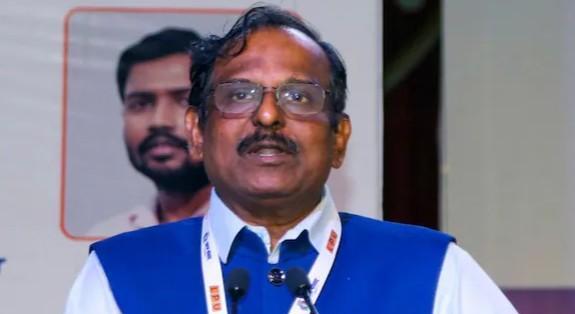
10 Satellites Working to Ensure Citizens’ Safety: ISRO
In the midst of heightened tensions between India and Pakistan, the Indian Space Research Organisation (ISRO) has been working tirelessly to ensure the safety and security of Indian citizens. According to ISRO chairman V Narayanan, 10 satellites are continuously working around the clock to monitor the country’s borders and ensure the security of its citizens.
In an interview, Narayanan emphasized the importance of satellite technology in maintaining the country’s security. “We have to monitor our 7,000 km seashore areas. Without satellite and drone technology, we can’t achieve many things,” he said. The ISRO chief’s statement highlights the critical role that satellite technology plays in ensuring the safety and security of the country.
One of the key satellites being used for surveillance is the RISAT-2B, which was launched in April 2019. This satellite is equipped with advanced radar technology that allows it to monitor the country’s borders in all weather conditions. The RISAT-2B is capable of detecting objects as small as a car, making it an invaluable tool in the country’s surveillance efforts.
In addition to the RISAT-2B, ISRO has a fleet of other satellites that are being used to monitor the country’s borders. These satellites include the Cartosat-3, which is designed to provide high-resolution images of the country’s borders, and the RISAT-2, which is equipped with advanced radar technology that allows it to detect objects in all weather conditions.
ISRO is also planning to launch another surveillance satellite on May 18, which will further enhance the country’s surveillance capabilities. The new satellite will be equipped with advanced sensors that will allow it to detect objects in high-resolution, providing the country’s security agencies with valuable intelligence.
The use of satellite technology in surveillance is not new to India. In the past, satellite technology has been used to monitor the country’s borders and detect any potential threats. However, the use of satellite technology has become even more critical in recent years, particularly in the wake of heightened tensions with Pakistan.
In recent years, there have been several instances where satellite technology has been used to detect and prevent potential threats to the country’s security. For example, in 2016, satellite technology was used to detect a group of terrorists who were planning to infiltrate into Indian territory from Pakistan. The detection was made possible through the use of advanced sensors and radar technology that are installed on ISRO’s satellites.
The use of satellite technology in surveillance is not limited to detection alone. The technology is also being used to provide real-time intelligence to the country’s security agencies. For example, ISRO’s satellites are equipped with advanced sensors that can detect and track objects in real-time, providing the country’s security agencies with valuable intelligence that can be used to prevent potential threats.
In addition to surveillance, satellite technology is also being used to provide other critical services to the country. For example, ISRO’s satellites are being used to provide communication services to remote areas of the country, as well as to provide weather forecasting services. The use of satellite technology in these areas is critical, as it allows the country’s security agencies to stay connected and informed, even in the most remote and challenging areas.
In conclusion, ISRO’s 10 satellites are working tirelessly to ensure the safety and security of Indian citizens. The use of satellite technology in surveillance is critical to the country’s security, as it allows the country’s security agencies to detect and track potential threats in real-time. The launch of another surveillance satellite on May 18 will further enhance the country’s surveillance capabilities, providing the country’s security agencies with valuable intelligence that can be used to prevent potential threats.






